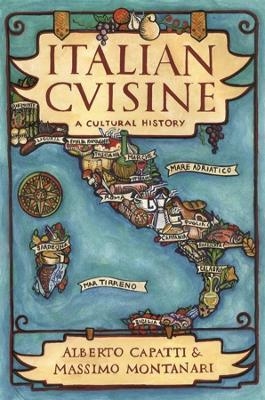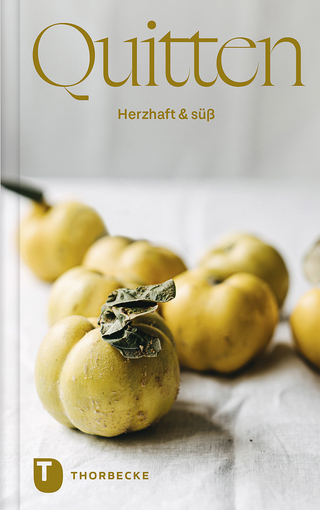
Italian Cuisine
A Cultural History
Seiten
2003
Columbia University Press (Verlag)
978-0-231-12232-0 (ISBN)
Columbia University Press (Verlag)
978-0-231-12232-0 (ISBN)
This magnificent new book demonstrates the development of a distinctive, unified culinary tradition throughout the Italian peninsula. Thematically organized and beautifully illustrated, Italian Cuisine is a rich history of the ingredients, dishes, techniques, and social customs behind the Italian food we know and love today.
Italy, the country with a hundred cities and a thousand bell towers, is also the country with a hundred cuisines and a thousand recipes. Its great variety of culinary practices reflects a history long dominated by regionalism and political division, and has led to the common conception of Italian food as a mosaic of regional customs rather than a single tradition. Nonetheless, this magnificent new book demonstrates the development of a distinctive, unified culinary tradition throughout the Italian peninsula. Alberto Capatti and Massimo Montanari uncover a network of culinary customs, food lore, and cooking practices, dating back as far as the Middle Ages, that are identifiably Italian: o Italians used forks 300 years before other Europeans, possibly because they were needed to handle pasta, which is slippery and dangerously hot. o Italians invented the practice of chilling drinks and may have invented ice cream. o Italian culinary practice influenced the rest of Europe to place more emphasis on vegetables and less on meat. o Salad was a distinctive aspect of the Italian meal as early as the sixteenth century.
The authors focus on culinary developments in the late medieval, Renaissance, and Baroque eras, aided by a wealth of cookbooks produced throughout the early modern period. They show how Italy's culinary identities emerged over the course of the centuries through an exchange of information and techniques among geographical regions and social classes. Though temporally, spatially, and socially diverse, these cuisines refer to a common experience that can be described as Italian. Thematically organized around key issues in culinary history and beautifully illustrated, Italian Cuisine is a rich history of the ingredients, dishes, techniques, and social customs behind the Italian food we know and love today.
Italy, the country with a hundred cities and a thousand bell towers, is also the country with a hundred cuisines and a thousand recipes. Its great variety of culinary practices reflects a history long dominated by regionalism and political division, and has led to the common conception of Italian food as a mosaic of regional customs rather than a single tradition. Nonetheless, this magnificent new book demonstrates the development of a distinctive, unified culinary tradition throughout the Italian peninsula. Alberto Capatti and Massimo Montanari uncover a network of culinary customs, food lore, and cooking practices, dating back as far as the Middle Ages, that are identifiably Italian: o Italians used forks 300 years before other Europeans, possibly because they were needed to handle pasta, which is slippery and dangerously hot. o Italians invented the practice of chilling drinks and may have invented ice cream. o Italian culinary practice influenced the rest of Europe to place more emphasis on vegetables and less on meat. o Salad was a distinctive aspect of the Italian meal as early as the sixteenth century.
The authors focus on culinary developments in the late medieval, Renaissance, and Baroque eras, aided by a wealth of cookbooks produced throughout the early modern period. They show how Italy's culinary identities emerged over the course of the centuries through an exchange of information and techniques among geographical regions and social classes. Though temporally, spatially, and socially diverse, these cuisines refer to a common experience that can be described as Italian. Thematically organized around key issues in culinary history and beautifully illustrated, Italian Cuisine is a rich history of the ingredients, dishes, techniques, and social customs behind the Italian food we know and love today.
Alberto Capatti is author of several books on food and eating and editor of the food section of Einaudi's History of Italy. Massimo Montanari teaches medieval history at the University of Bologna and is the preeminent historian of Italian food and eating habits. He is author of A History of European Nutrition and The Magic Pot, and co-editor of Food: A Culinary History (Columbia, 1999).
Introduction: Identity as Exchange Italy: A Physical and Mental Space The Italian Way of Eating The Formation of Taste The Sequence of Dishes Communicating Food: The Recipe Collection The Vocabulary of Food The Cook, the Innkeeper, and the Woman of the House Science and Technology in the Kitchen Toward a History of the Appetite
| Erscheint lt. Verlag | 17.9.2003 |
|---|---|
| Reihe/Serie | Arts and Traditions of the Table: Perspectives on Culinary History |
| Übersetzer | Aine O'Healy |
| Zusatzinfo | 75 illus. |
| Verlagsort | New York |
| Sprache | englisch |
| Maße | 152 x 229 mm |
| Themenwelt | Sachbuch/Ratgeber ► Essen / Trinken ► Grundkochbücher |
| Sachbuch/Ratgeber ► Essen / Trinken ► Länderküchen | |
| Sozialwissenschaften ► Soziologie | |
| ISBN-10 | 0-231-12232-2 / 0231122322 |
| ISBN-13 | 978-0-231-12232-0 / 9780231122320 |
| Zustand | Neuware |
| Haben Sie eine Frage zum Produkt? |
Mehr entdecken
aus dem Bereich
aus dem Bereich
deine Lieblingsrezepte - einfach gemacht!
Buch | Hardcover (2023)
Gräfe und Unzer (Verlag)
CHF 39,90


